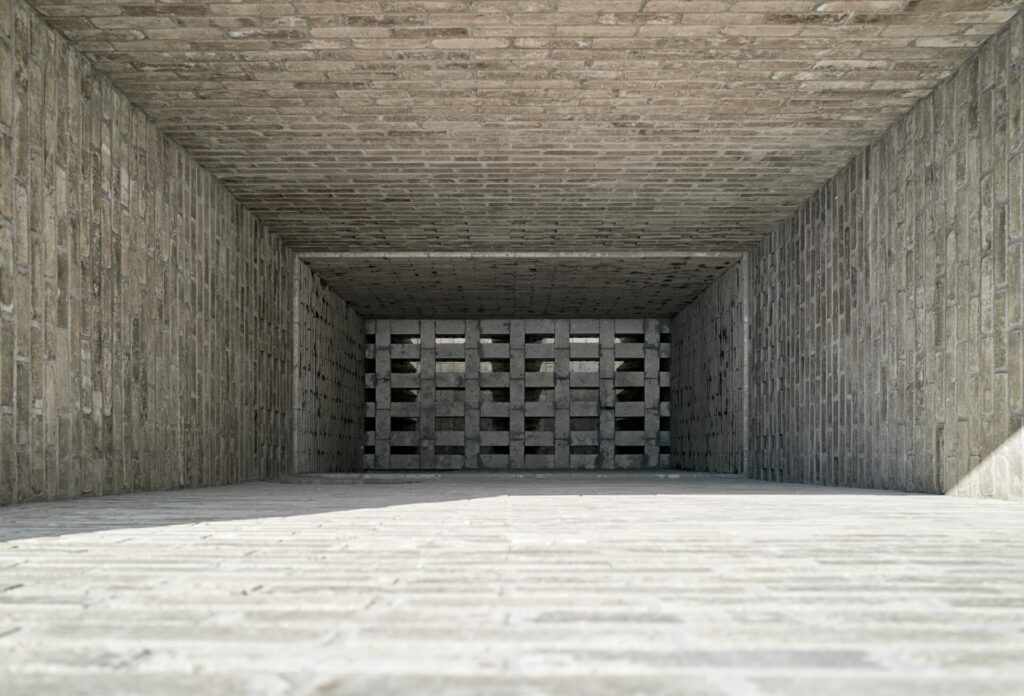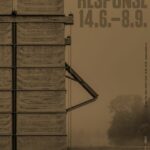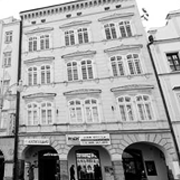Roger Boltshauser Architekten – Response
| Date | – |
|---|---|
| Vernissage | 13.06.2024 18:00 |
| Curator | Michal Škoda |
The use of clay as a building material is as old as the history of humankind itself. And yet this material is as contemporary as perhaps no other – because of not only its structural but also its environmental qualities. Clay is also a very important “theme” in the work of Roger Boltshauser.
As part of the České Budějovice House of Art’s series of architectural exhibitions, it is an honor for us to be able present the essence of Boltshauser’s creative endeavors. The exhibition clearly shows the close connection between architecture, art, and construction – aspects deeply rooted in his work. Roger Boltshauser founded Boltshauser Architekten AG in Zurich in 1996. In addition to his architectural activities with this studio, he has also taught at various institutions, including ETH Zurich, EPFL Lausanne, the University of Applied Sciences in Chur (HTW), and the Chur Institute of Architecture (CIA). He was a guest professor at the Technical University of Munich and is currently a guest lecturer at ETH Zurich. Besides his many architectural designs and realized projects, he has also shown his work at numerous group and solo exhibitions and has been honored with a number of important awards. (see www.boltshauser.info/profil)
Boltshauser’s main “theme” is sustainability, as convincingly evidenced by his diverse portfolio, which includes buildings made of clay, urban design projects, and essays on cultural heritage. In today’s overtechnologized era, when many things are dictated by industrial demands, the “re-use” of clay is still something new, something that possesses great potential for the future. Boltshauser is driven by a reassessment of these issues, their further exploration, and possible future applications. By taking a critical approach to established conventions, he tries to find new and meaningful solutions. His work shows a clear emphasis on the local context, a sense for balanced proportion, and the particular choice of materials. Boltshauser and his team clearly avoid fashionable trends. Like Peter Märkli – whose work we showed in Budějovice in 2017 and with whom Boltshauser taught at ETH Zurich and EPFL in Lausanne in the late 1990s – Boltshauser explores his personal fascination with, fears regarding, and interests in architecture. As Jonathan Sergison has said: “His work reassesses the timeless fundaments of architecture and challenges the canon of modernism in terms of contemporary construction techniques and environmental principles. The specific, sensuous character of his work arises from a personal sense of proportion and composition. Material surfaces are manipulated with a directness and robustness that are refreshing.” One of the most recent projects included in this exhibition, which perfectly exemplifies these characteristics, is the 2021 tower for the Ziegelei brickworks museum in Cham, Switzerland. This remarkable clay-built structure features structural innovations such as the use of prestressing in order to reinforce the building against seismic loads. It is also the first building in the world to be built of prestressed clay.
Another important aspect of Boltshauser’s creative endeavors is his artwork. Boltshauser has been making art since 1980, influenced by the Swiss neoexpressionists as well as by such artists as Kiefer, Rainer, and Joseph Beuys. Today, it is nearly impossible to consider his artistic work without the influence of architecture, just as his architectural projects cannot do without his artistic production. Roger Boltshauser’s architectural vocabulary has evolved within the context of his exploration of
materials and their inherent structural possibilities. Besides his many of small-scale projects, his work shows a clear focus on the public sector. His town halls, research laboratories, schools, sports facilities, and a zoo are clear evidence of the importance Boltshauser places on the social and urban responsibilities of architecture. The need to reduce our use of non-renewable resources and energy, coupled with increased attention on climate-related questions, has encouraged numerous studies and discussions related to the use of clay as a building material. A highly universal material, clay is easily accessible and capable of meeting
the needs of various climatic conditions. Boltshauser’s buildings reflect an awareness of this fact, which – combined with a healthy understanding of environmental issues – is also an important consideration in contemporary international architecture. He is engaged in a multi-pronged search for an original answer that will be as far-reaching and all-encompassing as possible. Issues such as sustainability are equally important for him as questions of composition and spatial design. Climate plays a role in all stages of planning and influences the urbanist design, the building’s layout and facades, the choice of materials, and the manner of construction. It is a formative as well as adaptable aspect of the design process, one that produces a unique and contemporary outcome. Response invites the visitor into a space that
hints at the essence of Boltshauser’s work. The special installation works with the photographs of Luca Ferrario to present several realized architectural designs alongside carefully selected drawings and models to re-create the association between architecture and art that is so important for his work.
A special thank you to Atelier Andrea Gassner for
their collaboration on this project





